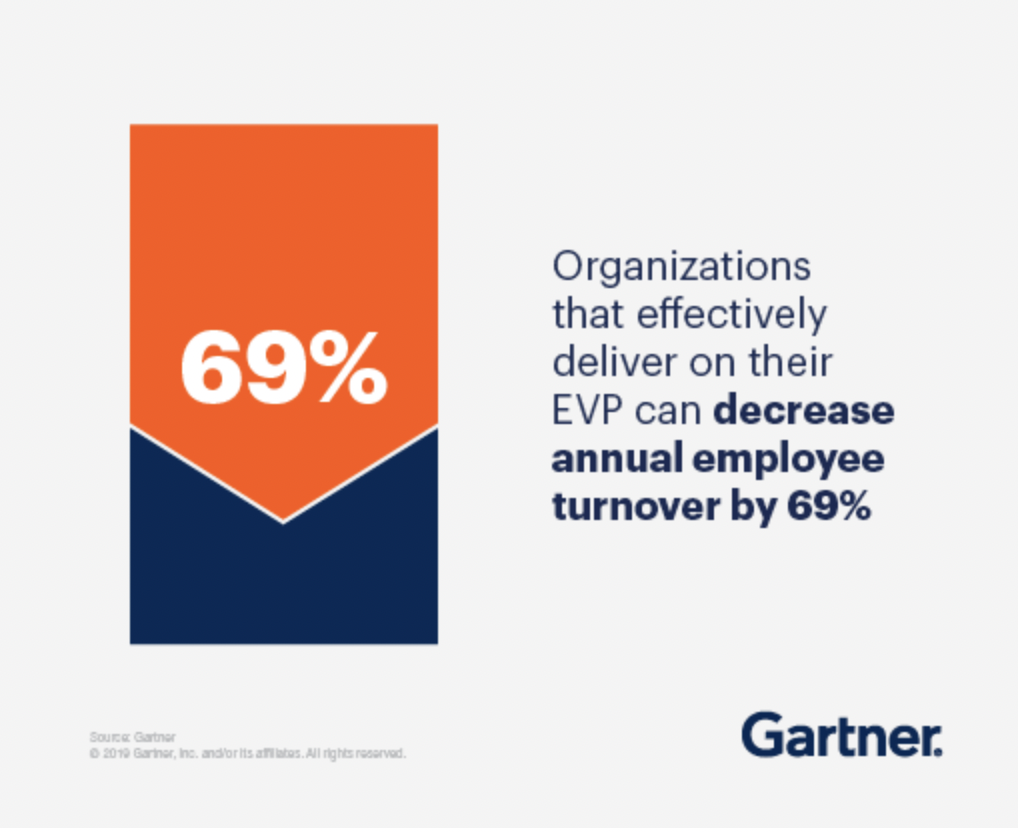The world around us revolves around recommendations. Think about it - when you’re looking to buy a new car, do you spend your time reading all you can about available models or ask a friend who knows about cars? When you’re looking to redecorate your home, do you do your own research or put your trust in an expert on TV?
The reality is, people gain confidence in taking a risk when there is a voice to vouch for its quality or performance. When you sign up to a business’s mailing list and they send an onboarding email, companies invariably take the opportunity to relay customer reviews to you.
With jobs, it’s no different. When people are job hunting nowadays, they research the company. A huge part of that research revolves around what employees, past and present, have to say about the experience of working for that business.
It can make or break the recruitment process and, if you get it wrong, can turn talent away. In the course of this article, we’ll explain what employee testimonials are and how you can turn them to your advantage.
What are employee testimonials?
Before we look into the benefits of any element of business, we need to understand what it is. It’s easier to get to grips with how something like employee testimonials as a process fits in an organization once you’ve answered the question; what is a business process?
In the case of employee testimonials, we’re referring to those endorsements, appraisals, or reviews given by employees either during their time or following their time at your company. They should describe the experience of working there, how well it reflects the job description they signed up for, and maybe a few tips on how to succeed in that environment.
Ideally, these would always be good, as this makes the company look good and reaffirms that your operation is working correctly. It gives new employees’ expectations and prospective applicants a better idea of what they could be signing up for.
If you start asking for testimonials and are met with mixed or negative feedback, be sure to take that in your stride also. They can be a great tool for rectifying flaws as well as garnering confidence in prospective applicants.
Now that we've explained what employee testimonials are, let’s take a look at a few things you need to be aware of in order to use them successfully.
1. Set clear objectives

A great starting point with introducing any new way of working is to set out what you want this change to achieve. If you were to, for example, introduce a customer onboarding process template into your workflow, you want to know just what benefits that brings to the customer and the marketing team.
There’s no point in trying something new or different if you have no criteria to judge it by or no idea what positive change you want it to bring in.
As this pertains to employee testimonials, setting out objectives that could be metric, such as your scores on sites like Glassdoor or Indeed, or volume, such as how many you want to acquire from employees, is often a good starting point. Aim for quantitative data initially, and any qualitative readings can come later.
2. Use examples
Different people pick up new ways of working in different ways. Explaining the purpose of these testimonials to employees as you begin to request them is vitally important for the success of this whole scheme. Some people will understand what you mean from the basic description alone.
Others may need more time to get to grips with it. For example, if your content team needed to understand a new type of content you wanted them to produce, showing them guest posts is a good way to outline your aims. Similarly, if these testimonials formed part of a wider move to be video-first, having examples of videos that work well, and maybe some that don’t, can be of great benefit.
When this happens, having examples on hand to show the kind of thing you’re looking for - in terms of content, format, style, and size - is really handy. Being able to illustrate how the finished article, or video, looks makes some people more confident in their ability to do the same thing.
If you can also show the results that testimonials like the ones in your example have achieved, this can make all the difference in whether certain employees participate at all.
3. Get buy-in
The last part of the above point speaks to the notion of buy-in. It’s one of the oldest principles in the management book. Getting people inside your organization on board with something new that you’d like to try is often where changes to process live or die.
And, when it comes to making the best use of employee testimonials, getting that buy-in from certain areas of the business is no less important.
It also means that your workforce is more engaged, which becomes an extra selling point in recruitment conversations.
As well as this, having an engaged employee pool means that you're less likely to have to run recruitment processes regularly. According to Gartner, having a strong employee value proposition decreases annual employee turnover by 69%.

We’ve explored a bit of the importance of getting that buy-in from employees that you want to source opinions from. However, we also need to make sure that the HR department is bought into the idea of using employee testimonials in their work.
These are usually the first people that any prospective applicant encounters in a business. So giving them all the tools possible to allow them to sell the business to these applicants is in everyone’s best interest.
4. Be flexible
A certain amount of flexibility is required for something like employee testimonials. You have to accept that they aren’t all going to come flooding in at once. While setting deadlines may be a good way of focusing the mind of your workforce, it’s difficult to make something like a testimonial higher priority than their day-to-day activities.
This flexibility needs to also extend to the format in which they’re sent in. Some testimonials work best when written down. Some come in a call. This is why having sufficient tools such as corporate phone plans is also advisable. Others are helped along by a video of the person giving their account of the experience of working for your company.
And once you have enough testimonials from a wide range of voices in several different formats, being flexible in how they’re used makes for a more likely eventual success. Some testimonials may be better suited to being pushed on social media, others on your website, and some on review sites like Glassdoor. The key is to be open-minded about most aspects of this process.
5. Awareness
By awareness, we don’t mean raising the word among employees that testimonials are needed from them. It’s more about your understanding that anything can be a testimonial. People say all sorts of things in the working environment that aren’t always written down or documented in some way. If that off-the-cuff remark happens to be positive, don’t be afraid of using it.
In many ways, using employee testimonials to help with recruitment is aided by this authenticity. People are more likely to give an honest account of how they feel about something when they haven’t been explicitly asked, especially by management. This type of positive comment is worth five of the more formally-acquired responses, in terms of how trustworthy the content is.
6. Keep control
As the person overseeing the process of using testimonials in your recruitment work, it’s vital that control over what and how this content is used resides with you. Not everything can be overseen by even the most effective workforce management tools.
If a testimonial comes in with poor spelling and grammar, don’t feel honor bound to present it as is in the hope of avoiding an accusation of senior tinkering to make the company look better than it is.
Polishing up testimonials, or even changing some wording here and there, will make them more effective in achieving that end goal of appealing to job hunters and giving candidates a great experience. As long as you aren’t turning a completely negative response into a glowing review, you are fine to make adjustments here and there.
7. Transparency

A great way to avoid accusations of trying to introduce a positive spin into these testimonials is to be completely transparent about the process. It’s an area of quality culture training that more managers should have, as culture drives so much of the goodwill you’re looking to capitalize on with testimonials.
As employees submit their responses, be open about what will happen next. If you do make changes to what they’ve given you, run it past them, once edited, to get their sign-off.
Failure to do this can cause catastrophic reputational damage. If word gets out that you have manufactured testimonials that make your company seem better than it is, then this can have the opposite effect than the point of the scheme itself. This could result in the knock-on effect of poor candidate feedback, which makes the job of recruiting in the future even harder.
Conclusion
In this article, we’ve explained what employee testimonials are. We’ve provided context as to why they are so avidly used in HR resources and recruitment work worldwide. And we’ve shared some key tips on how you can ensure your employee testimonial process runs smoothly in house and has a maximum effect outside of it.
The reality is, people very rarely do anything on the internet without getting the advice of other users first. If you can harness the power of your existing workforce in order to minimize the fears of prospective candidates, this can be a great way to adjust to this modern reality.




.jpg?width=1000&name=6797cc6580ed37f294dde1be_pexels-linkedin-sales-navigator-7245806%20(1).jpg)


